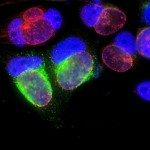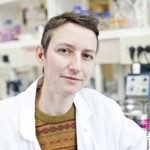Link to Pubmed [PMID] – 33752267
Link to DOI – 10.1111/febs.15833
FEBS J 2022 Apr; 289(7): 1779-1800
Atg16-like (ATG16L) proteins were identified in higher eukaryotes for their resemblance to Atg16, a yeast protein previously characterized as a subunit of the Atg12-Atg5/Atg16 complex. In yeast, this complex catalyzes the lipidation of Atg8 on pre-autophagosomal structures and is therefore required for the formation of autophagosomes. In higher eukaryotes, ATG16L1 is also almost exclusively present as part of an ATG12-ATG5/ATG16L1 complex and has the same essential function in autophagy. However, ATG16L1 is three times bigger than Atg16. It displays, in particular, a carboxy-terminal extension, including a WD40 domain, which provides a platform for interaction with a variety of proteins, and allows for the recruitment of the ATG12-ATG5/ATG16L1 complex to membranes under different contexts. Furthermore, detailed analyses at the cellular level have revealed that some of the ATG16L1-driven activities are independent of the lipidation reaction catalyzed by the ATG12-ATG5/ATG16L1 complex. At the organ level, the use of mice that are hypomorphic for Atg16l1, or with cell-specific ablation of its expression, revealed a large panel of consequences of ATG16L1 dysfunctions. In this review, we recapitulate the current knowledge on ATG16L1 expression and functions. We emphasize, in particular, how it broadly acts as a brake on inflammation, thereby contributing to maintaining cell homeostasis. We also report on independent studies that converge to show that ATG16L1 is an important player in the regulation of intracellular traffic. Overall, autophagy-independent functions of ATG16L1 probably account for more of the phenotypes associated with ATG16L1 deficiencies than currently appreciated.

